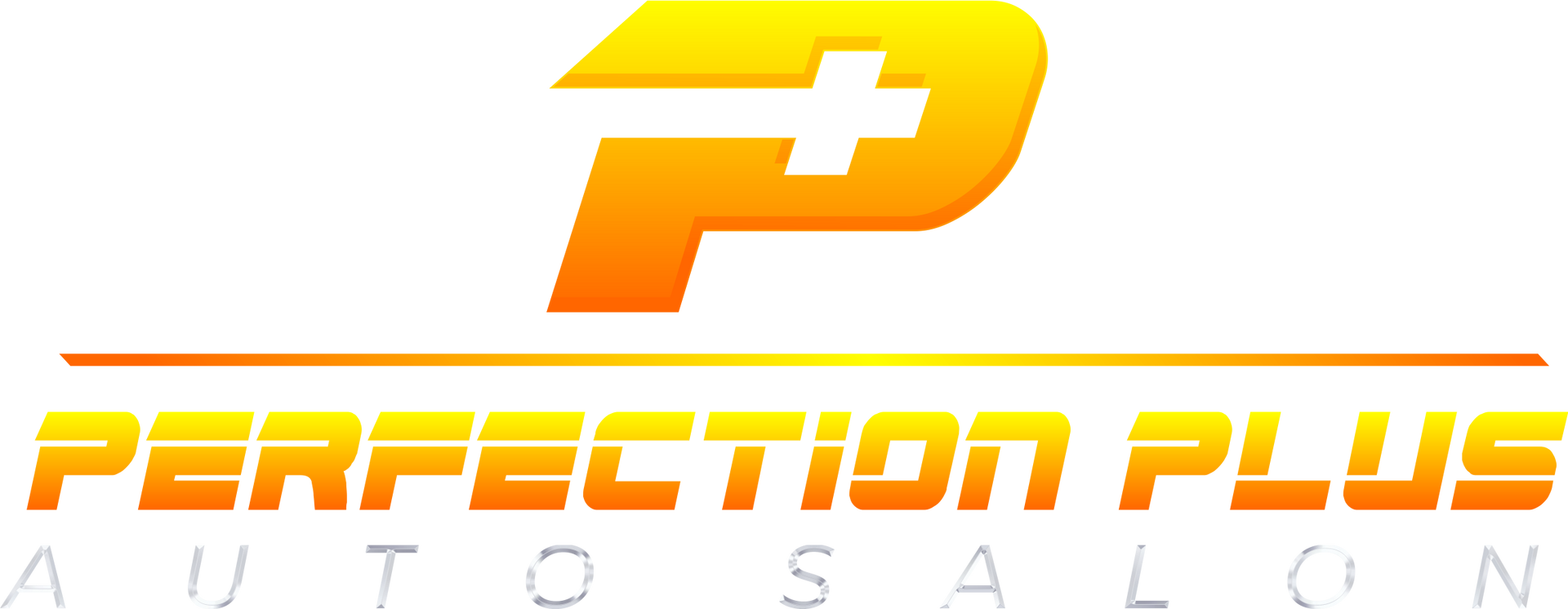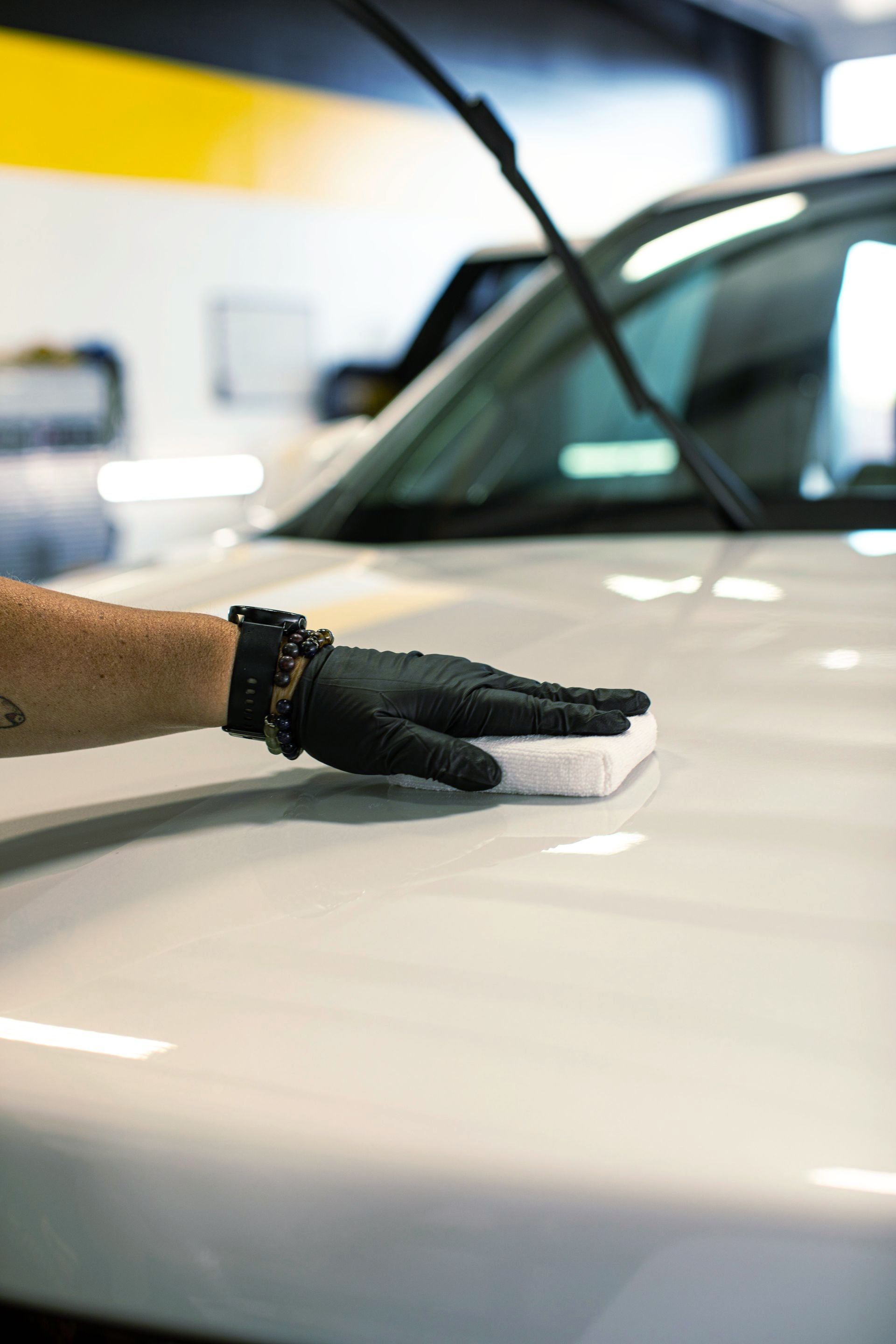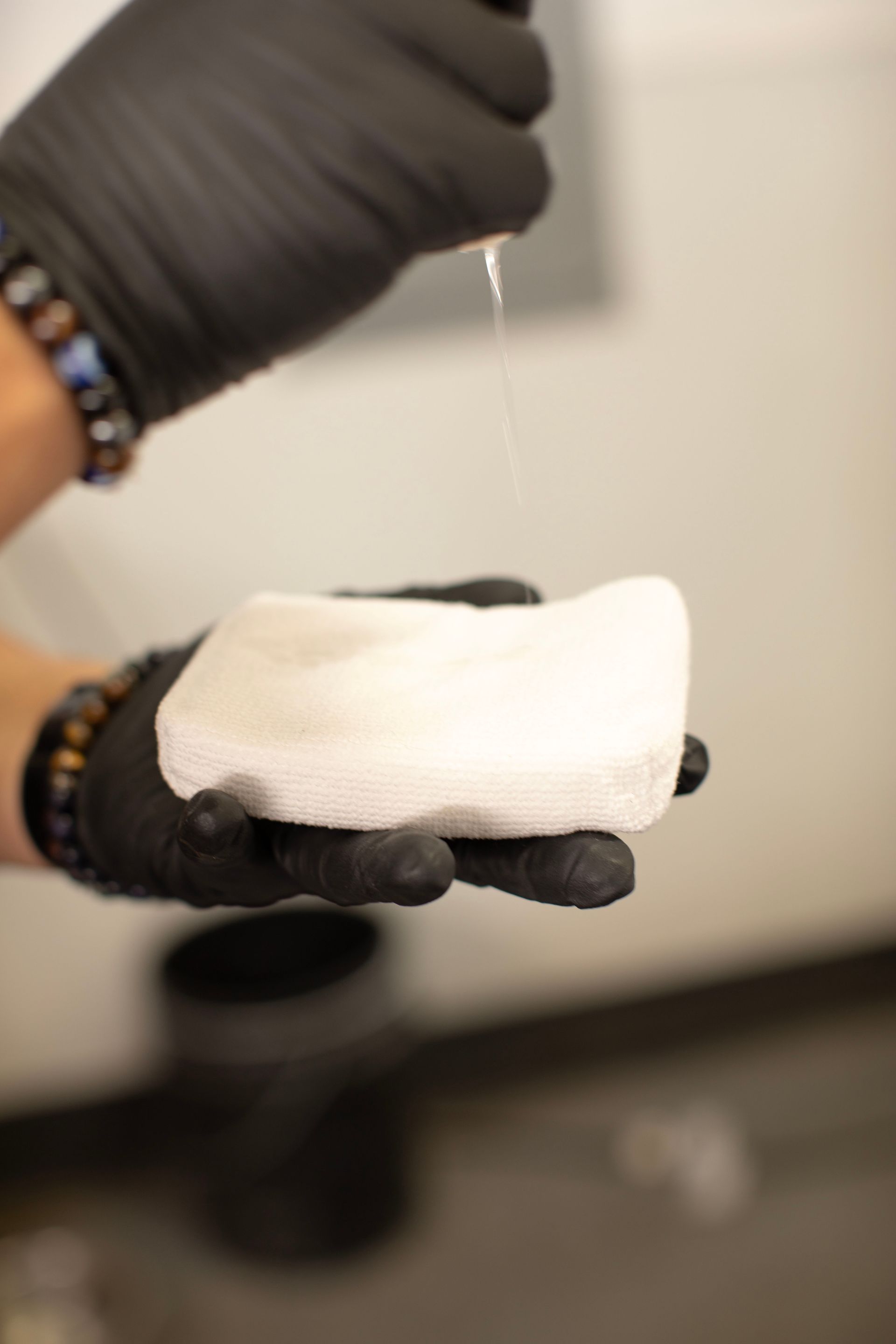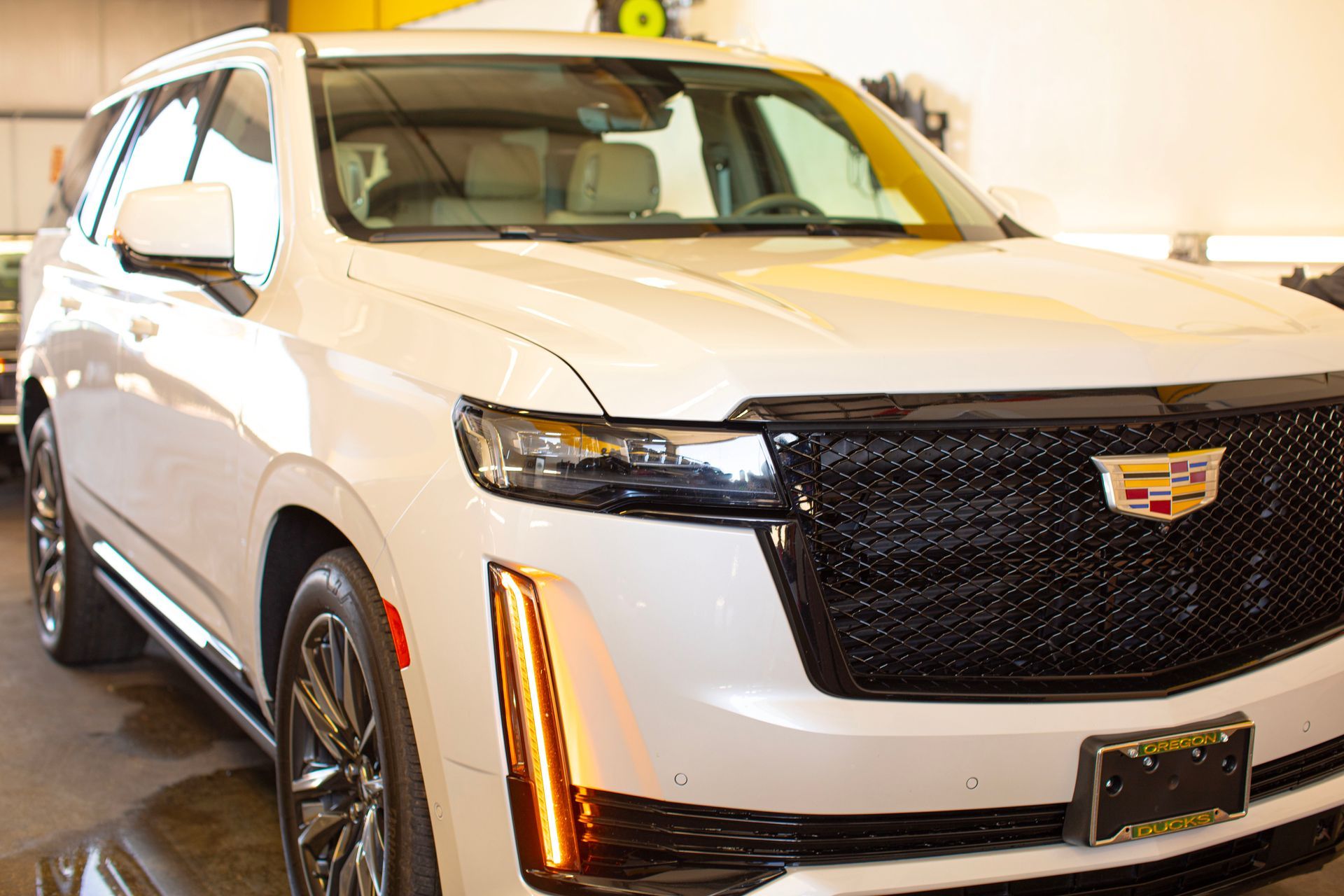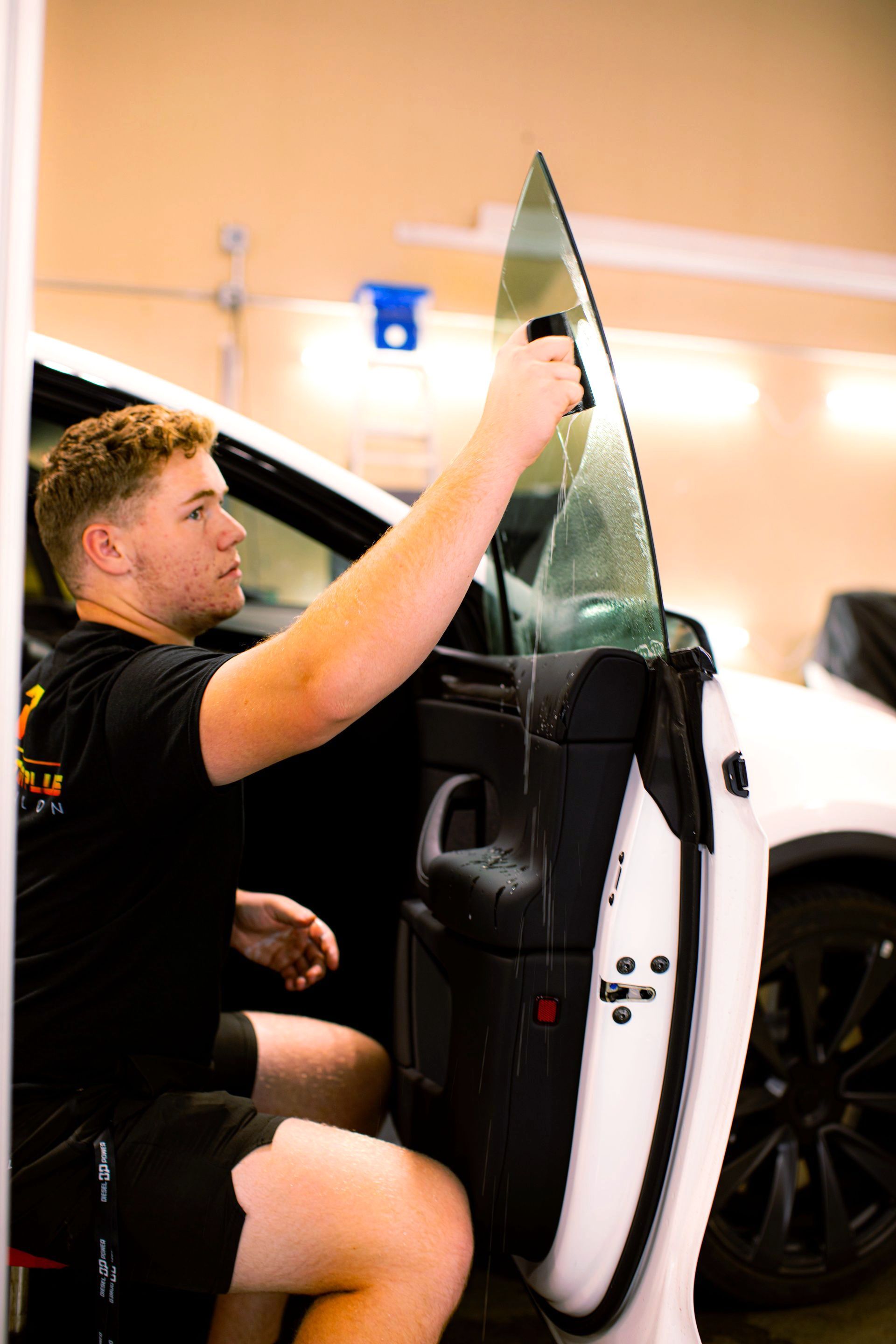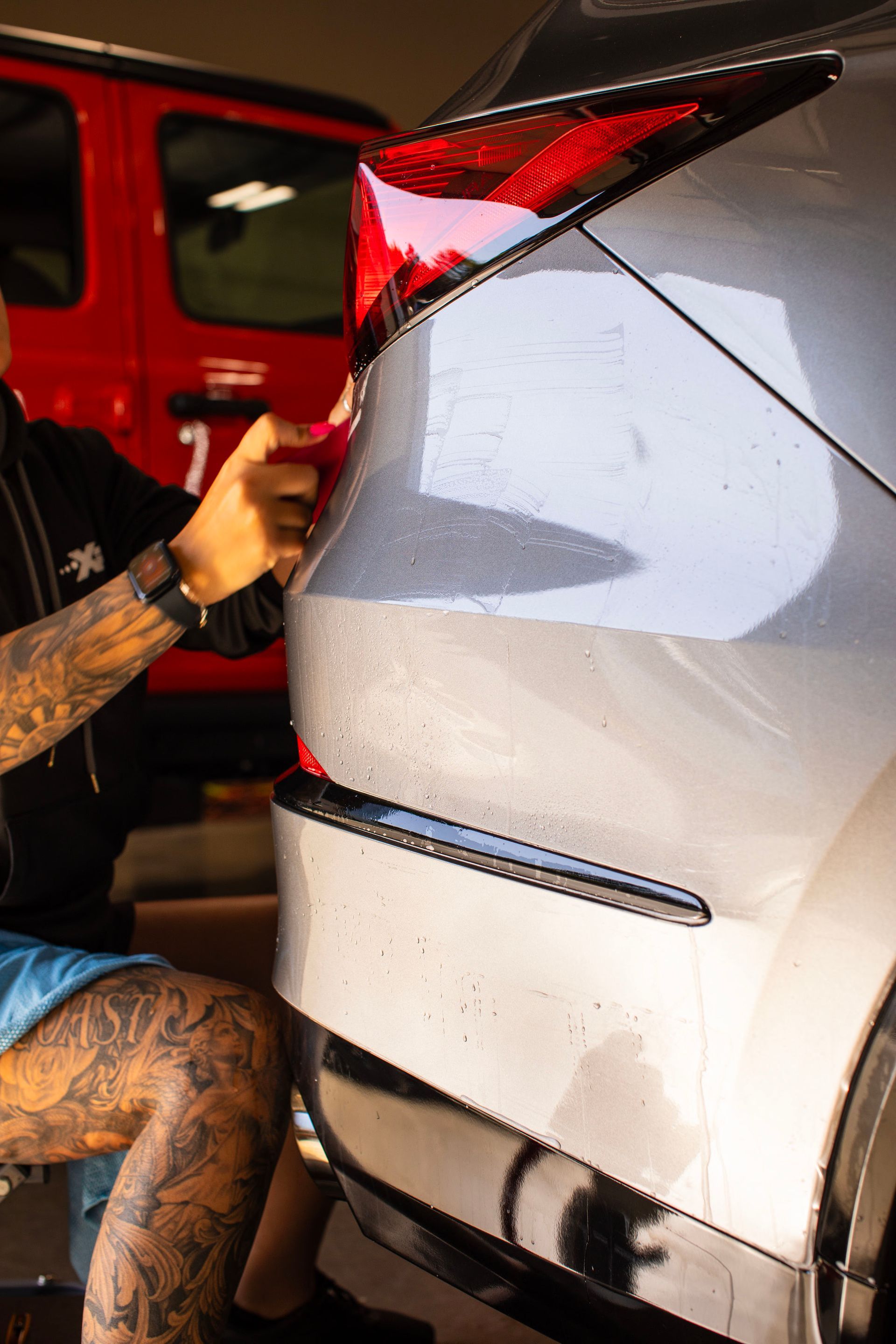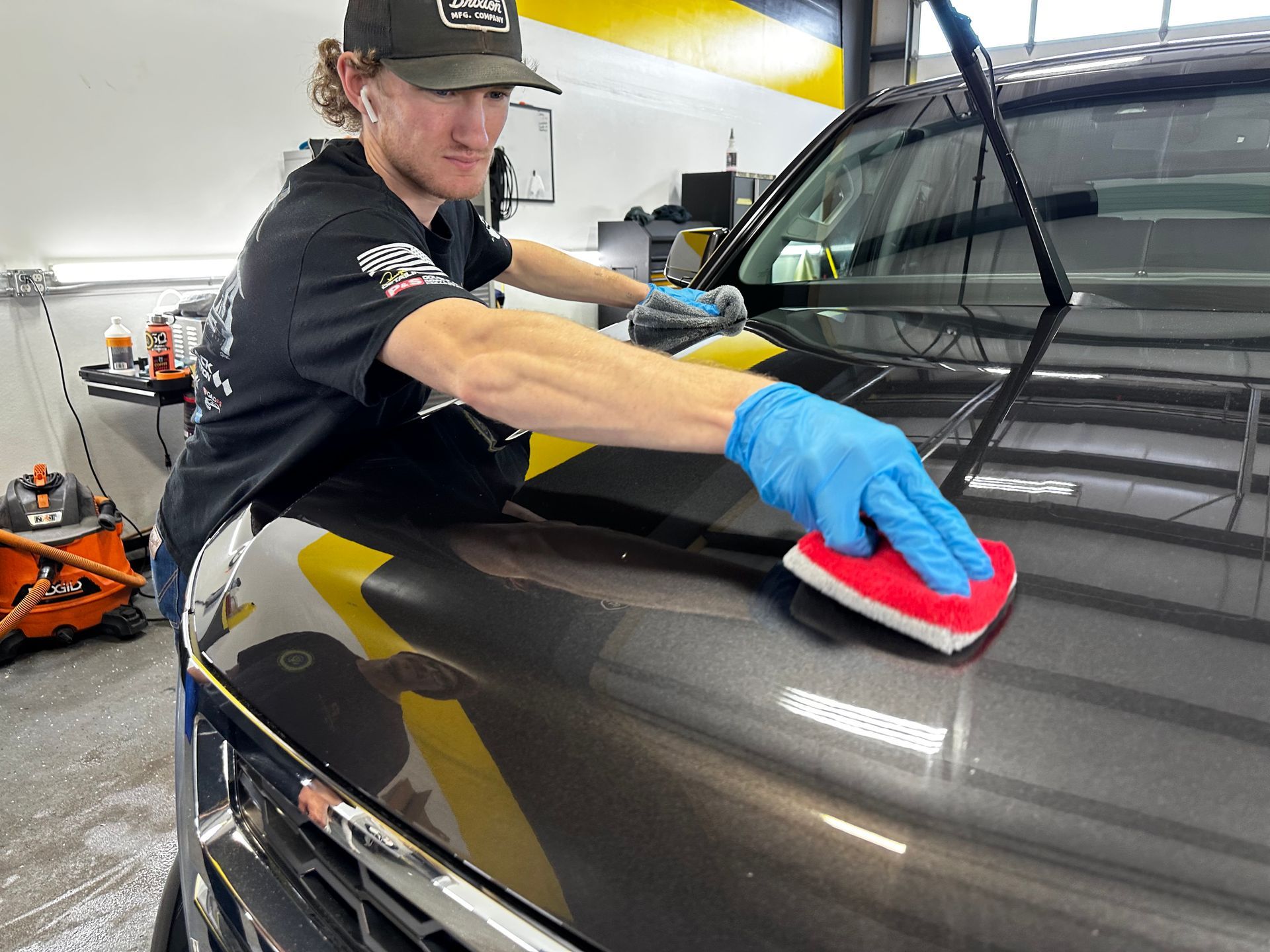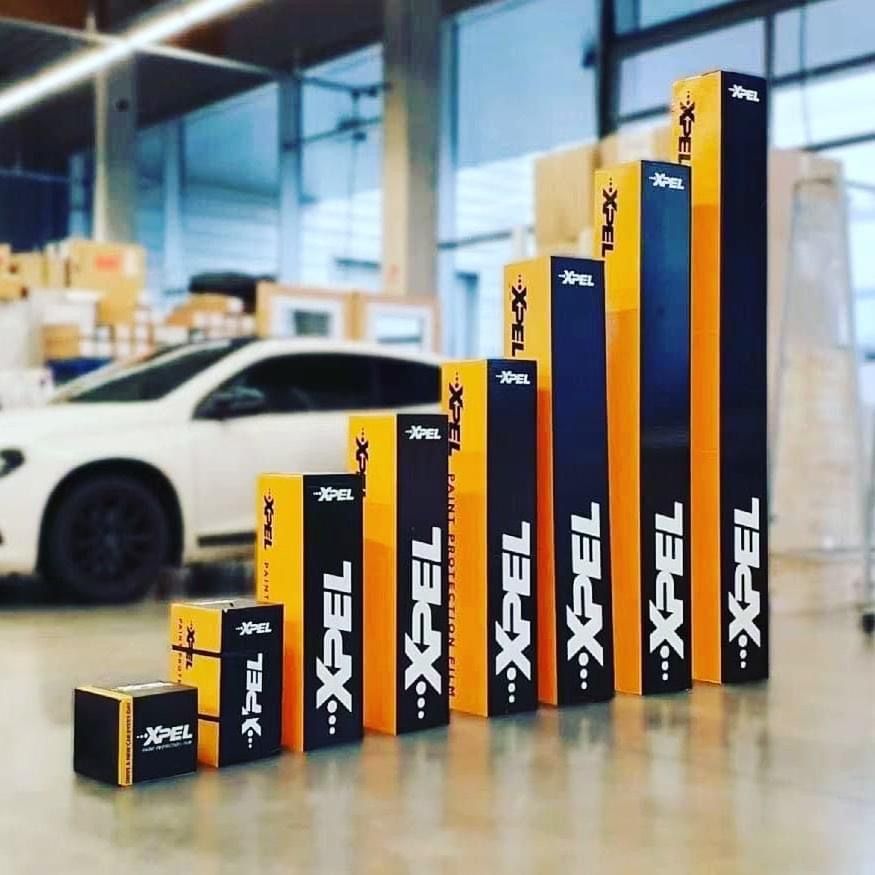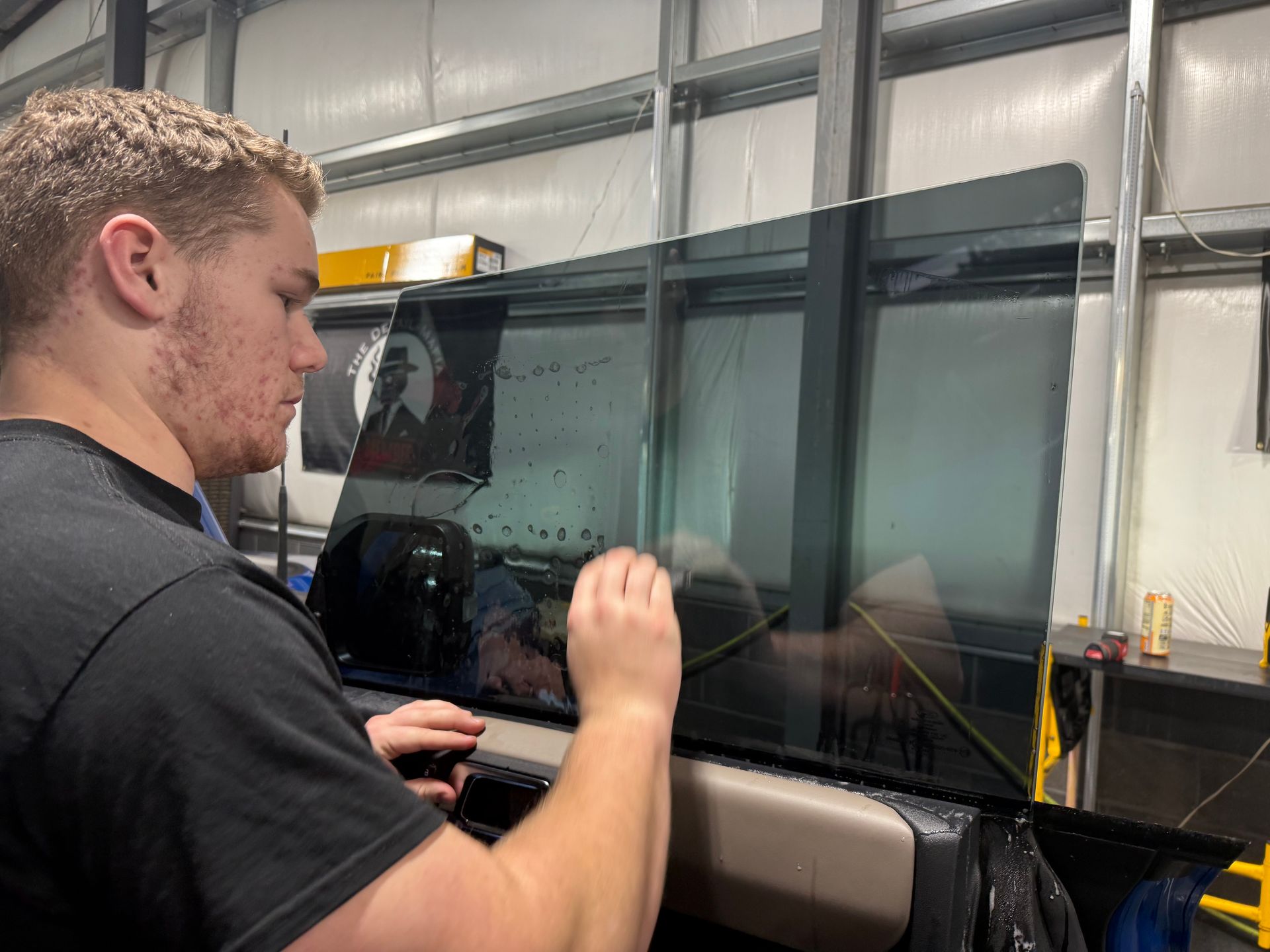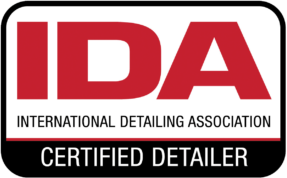Ceramic Coating Maintenance Tips: How to Keep Your Car's Shine Lasting Longer
GET A FREE ESTIMATEThe key to a long-lasting shine on your car lies in comprehensive quality protection. High-quality ceramic coatings guard your car against UV damage, repel dirt, grant a lasting shine, and usually come with warranties stretching up to 3 years or more. Meanwhile, careful cleaning with soft microfiber cloths or mittens, along with pH-balanced ceramic shampoo, goes a long way in preventing scratches or smudges.
To maintain the long-lasting shine of a ceramic coating, it's important to follow a regular maintenance routine. Typically, this involves using a pH-balanced ceramic shampoo and high-quality microfiber cloths for gentle hand washing, and ensuring that the coated car is regularly inspected. It is crucial to avoid harsh chemicals, abrasive tools, and improper cleaning techniques to preserve the coating's aesthetic and protective qualities.
Advantages of Different Ceramic Coatings
When it comes to ceramic coatings, not all treatments are created equal. Some provide better protection and longevity, ensuring your vehicle maintains its showroom shine for longer periods of time. Let's explore some key benefits of different ceramic coatings:
- Protection Against UV Rays: Ceramic coatings act as a shield against harmful ultraviolet (UV) rays, preventing the fading and oxidation of your vehicle's paintwork. This is particularly important considering how prolonged exposure to sunlight can cause the vibrant color of your car to dull over time.
- Lasting Shine: Unlike traditional waxes or sealants, ceramic coatings offer a longer-lasting glossy finish, enhancing the appearance of your vehicle for an extended period of time. The ceramic layer creates a protective barrier that preserves the paint's luster and depth, maintaining a like-new shine. The lasting shine not only gives the vehicle immediate visual appeal but also contributes to retaining its resale value.
- Hydrophobic Properties: One of the most prominent advantages of ceramic coatings is their hydrophobic properties. These coatings create a surface where water beads up and rolls off easily, carrying dirt and contaminants away with it. As a result, your car stays cleaner for longer periods of time and is easier to wash when necessary.
- Warranty Coverage: Premium ceramic coating packages often come with warranties ranging from 3 to 5 years, offering assurance of long-term protection for your vehicle's exterior. These warranties provide peace of mind, knowing that any issues with the coating can be addressed promptly and professionally.
Understanding these advantages helps us see why choosing the right ceramic coating can provide superior protection against various environmental factors. Whether it's UV rays, keeping your car looking shiny, or repelling water and dirt effectively, the choice of ceramic coating makes a significant difference in preserving your vehicle's exterior.
Tools for Safely Cleaning a Ceramic-Coated Car
Cleaning a ceramic-coated car requires more than just any old rag and soap. To maintain the long-lasting protection and glossy shine of your ceramic coating, you'll need specific tools and products that work harmoniously with the coating's properties. Using improper tools or harsh chemicals can compromise the integrity of the ceramic coating, leading to scratches, smudges, and even a decrease in hydrophobic quality.
- High-Quality Microfiber Cloths or Hand Mittens: When it comes to cleaning a ceramic coated car, using the right cleaning cloths is crucial. High-quality microfiber cloths or hand mittens are designed to lift and trap dirt, preventing abrasion against the delicate surface of your car's ceramic coating. These specialized cloths ensure thorough cleaning without leaving behind scratches or smudges that can detract from the pristine finish of your car.
- pH-Balanced Ceramic Shampoo: Another essential tool for safely cleaning a ceramic coated car is a pH-balanced ceramic shampoo. Unlike traditional car shampoos, pH-balanced ceramic shampoos are specifically formulated to maintain the pH level of the coating, preventing damage and preserving its hydrophobic properties. Using a two-bucket method—where one bucket contains soapy water and the other clean water—ensures that dirt is not reintroduced onto the wash mittens, further safeguarding against scratches during the cleaning process.
By employing these high-quality tools and products, you can ensure that your ceramic coated car receives gentle yet effective cleaning that maintains its glossy shine and protective qualities over time.
Boosting the Ceramic Coating's Protection
So, you've invested in a ceramic coating to keep your car looking sleek and shiny, but beyond the initial application, it's crucial to understand how to prolong its efficacy. Applying ceramic boosters acts like giving your car's protective shield a little boost, ensuring it stays in top form.
Ceramic boosters are designed to replenish the performance of the existing coating, supplementing and enhancing its durability and resistance properties. They are akin to giving your car's surface an extra layer of armor, protecting it from environmental hazards such as UV rays, water spots, and dirt buildup. Maintaining this routine safeguards against a decline in the coating's original qualities, like the glossy finish and hydrophobic properties that repel dirt and water. In addition to regular maintenance, a few extra tricks can help you keep your ceramic-coated car looking amazing for longer. By applying ceramic boosters every 6–12 months, you can maintain the hydrophobic quality of the coating and ensure a glossy finish. These boosters act as a helpful shield, complementing the work of the original ceramic coat.
Importance of Regular Washing and Care
Picture this: You've just had your car treated with a premium ceramic coating. It's gleaming, and you feel proud driving it around town. Now, to ensure that a shiny coat lasts as long as possible, regular and proper washing is crucial. Ceramic coatings offer immense benefits like UV protection, lasting shine, and hydrophobic properties that repel dirt and water. However, without proper maintenance, these benefits may diminish over time.
Neglecting regular washing can lead to a decrease in shine, a loss of hydrophobic quality, and an accumulation of grime on the coated surface. Vulnerability to hazards increases when a ceramic coating isn't properly maintained. This means that your vehicle is at a higher risk of damage from environmental contaminants, bird droppings, tree sap, bugs, road salt, and other everyday elements that can mar the coating. In essence, regular washing and care are vital to upholding the intended protective qualities of ceramic coatings. Consider this analogy: Just like keeping your shoes tidy ensures they last longer and look great, maintaining your ceramic coated car also safeguards its appearance and longevity. The investment in care now saves on the cost of potential repairs or reapplications later.
Moreover, scheduled maintenance doesn't just preserve the immediate gloss; it also shields your car's underlying paintwork. By consistently removing contaminants through proper washing techniques, you're preventing these particles from bonding to the surface and causing damage over time. Regular washing ensures your ceramic coating stays resilient against harsh elements and maintains its hallmark shine. This not only keeps your car looking fantastic but also protects your investment in the long run. Investing time in maintaining your ceramic coated car through regular washing not only keeps it visually stunning but also safeguards its long-term durability. With a little effort today, you can enjoy a glossy and protected ride for years to come.
When to Consider Ceramic Coating Reapplication
Ceramic coatings provide a robust, long-lasting shield for your vehicle’s paintwork, offering protection against the elements, UV rays, and minor abrasions. However, over time, even the best ceramic coatings can begin to degrade. Knowing when to reapply can help maintain the pristine look of your car and ensure continuous protection. Here are some signs and situations that indicate it might be time to consider reapplying ceramic coating:
- Visible Water Spots and Stains: If water spots, bird droppings, or other contaminants are no longer easily removed, this is a clear sign that the ceramic coating is wearing off. These coatings are designed to be hydrophobic, repelling water and making cleaning easier. When this property diminishes, it's time for a refresh.
- Reduced Hydrophobic Effect: One of the most noticeable features of a ceramic coating is its ability to repel water. When you observe that water is no longer beading on the surface as it once did, this suggests the hydrophobic layer is breaking down and the coating needs reapplication.
- Loss of Gloss and Shine: A well-maintained ceramic coating will enhance your car’s gloss and shine. If your vehicle's paint starts to look dull and lacks the vibrant shine it once had, it indicates that the coating has worn away and a new application is necessary to restore its luster.
- Increased Dirt and Dust Accumulation: Ceramic coatings help prevent dirt, dust, and other debris from sticking to your vehicle’s surface. If you find that your car is getting dirtier more quickly and that it's harder to clean, the coating might be losing its effectiveness.
- Surface Roughness: Run your hand over the surface of your car. A smooth, slick feel usually indicates a healthy ceramic coating. If the surface feels rough or gritty, it’s a sign that the coating has degraded and reapplication is needed.
- Time Since Last Application: Even if you don’t notice visible signs of wear, the passage of time alone can affect the integrity of the coating. Most ceramic coatings are designed to last between 3 and 5 years, depending on the product and environmental conditions. Adhering to the manufacturer’s recommended timeframe for reapplication can ensure consistent protection.
Regular maintenance and timely reapplication of ceramic coatings will keep your car looking its best and provide ongoing protection against environmental damage. If you notice any of these signs, it may be time to schedule a reapplication to keep your vehicle in top condition.
Top-Tier Ceramic Coating Solutions Provider in Bend, OR
Experience unparalleled protection for your vehicle's paint with Perfection Plus Auto Salon, the premier destination for
top-tier ceramic coating solutions in Bend, OR. Dive into a world where craftsmanship meets innovation as our expert team applies advanced ceramic coatings to shield your car's exterior from the elements. With our meticulous attention to detail and dedication to quality, your vehicle will not only boast a stunning finish but also enjoy long-lasting protection from environmental contaminants. Schedule your appointment today and ensure your vehicle remains pristine for years to come. Call us at
(541) 598-6193 to get started!
